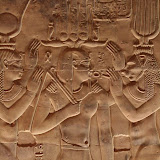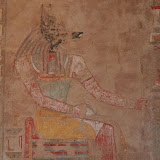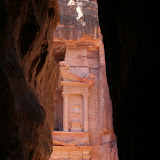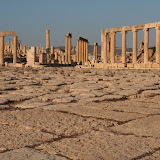January in Paris wasn’t nearly as cold as December had been…and it was an exciting month for us!! We finally received our Cartes de Sejour (residency permits) and now could move along to the next step of the French bureaucracy process… We moved into our second semester of teaching—and with a schedule change for Dan, it meant that we both worked on only Tuesdays and Fridays! And, we had our first non-family visitors!
For photos, click here.
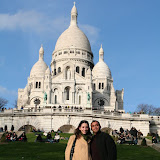 |
| Paris January |
Kimberly
To compensate for last month’s lengthy analysis of French customer service, I plan to keep this posting short and sweet. The highlight of this month was definitely food! We had two different sets of friends visit us. Both had been to Paris before, so all they wanted to do was take some scenic walks around the city...and eat!
Our friends from the Stanford GSB, Salil and Nicole visited over Martin Luther King Day Weekend from New York. As mentioned above, the majority of their trip was spent eating: We managed to hit Atelier, Le Souk, L’Artisan, and Allard...and one or two others all in one long weekend! We did manage to squeeze in some time for some sightseeing and shopping. We visited Jim Morrison, Oscar Wilde, and Chopin at the Pere-Lachaise Cemetery. We strolled through the artists painting the tourists in Montmartre near the church of Sacre-Coeur. And we hit up the Soldes (big half-yearly sales)...Salil managed to find a pair of Bally boots for less than half price he had seen them in New York!
Another GSB friend, Matt, visited us two weekends later from London. Again, the focus of the weekend was on eating: We tried a new place called Equitable, and took Matt to a few of our favorites: Le Reminet, Gerard-Mulot, and Lauduree. We also managed a little sightseeing, with the highlight being one of our favorite museums, the little known Musee Marmottan in the 16th arrondissement. This private museum is in a restored mansion next to the Bois du Bologne and has one of the largest collection of Monet paintings anywhere. There are many studies of his famous “Waterlilies,” the final works now displayed in the restored L’Orangerie. But the real highlight is the painting “Impression: Sunrise” — for which the Impressionist movement was named.
L'Atelier de Joël Robuchon
5-7 rue de Montalembert - 75007, Paris – 01 42 22 56 56
(One of Europe's most well-received chefs, Robuchon astonished critics when he turned his back on the Michelin Star system in favor of a non-traditional restaurant focused on innovative food. Unfortunately, this doesn’t necessarily translate into cheap, as a meal here will still put you back at least 100 Euros a person…but that’s still probably half the price of his old 3-Michelin-Star establishment. Atelier is especially known for its “small plates”…which, confusingly, you are not meant to share…ordering family style was very confusing to the staff. The food was excellent though, the decor hip and stylish, and the seating really cool: at a bar before an open kitchen, where you can watch culinary preparations and be served immediately at an upscale counter. FYI, reservations accepted only for first sitting…so come early to get your name on the list.)
Equitable
1, rue des Fossés Saint-Marcel - 75005, Paris – 01 43 31 69 20
(One of our best finds in Paris. This wonderful upscale bistro tucked away in the 5th arrondissement serves some of the most innovative and beautifully prepared food in all of Paris. And the prices are an absolute steal: 32 Euros for a three-course meal! The best part is undoubtedly the service though…friendly, smiling waiters and an owner who seems genuinely happy to have you – even an American – in his restaurant. Order a bottle of the Chateau Margaux wine and you’re all set for a splendid meal.)
Allard
41 rue St-André-des-Arts – 75006, Paris – 01 43 26 48 23
(If you are looking for a standard Paris Bistro experience, look no further…This is one of the mainstays of the Parisian dining scene—opened in 1931, and still booked every night for wonderful roasted chicken, veal stew, and turbot in a beurre blanc sauce. It’s quite pricy, especially if you order one of their specialties…we had a chicken with mushrooms that was wonderful. But the location, service, and overall dining experience make it a quintessential Parisian night out.)
Le Gourmand
22, rue de Vaugirard – 75006, Paris - 01-43-26-26-05
(A very good find, this upscale bistro, just across the street from the Luxembourg Gardens serves innovative fresh food in a very modern setting (for Paris). Lunch is a better deal than dinner, with many of the same exact dishes offered at lower prices.)
Le Souk
www.lesoukfr.com
1, rue Keller - 75011, Paris - 01-49-29-05-08
(Our friends, Salil and Nicole, had just read about this fabulous Moroccan restaurant in a New York Times article. It definitely lived up to the hype. Tasty tagines, couscous, and wonderful pastilla! (a sweet/savory mixture of pastry, cinnamon, powdered sugar, chicken, and nuts.) And, by Parisian standards, quite a reasonable meal.)
L’Artisan de Saveurs
http://www.lartisandesaveurs.com/
72 rue du Cherche Midi - 75006, Paris – 01 42 22 46 64
(Widely regarded as one of the premium “Salons du Thé” in Paris, read: a place for tea and French cakes and pastries, this is also one of the best places for Sunday brunch. A relatively new phenomenon in Paris, unfortunately, it is still generally restricted to 30 Euros fixed-price multi-course meals…as is the case at L’Artisan. Here, at least, the brunch is fabulous…and quite filling…you probably won’t be hungry for dinner after your basket of fresh baked brioches and croissants, salmon blinis (or omelette, or veal picatta or crab cake), and housemade dessert…served with fresh orange juice and coffee/tea/hot chocolate!)


